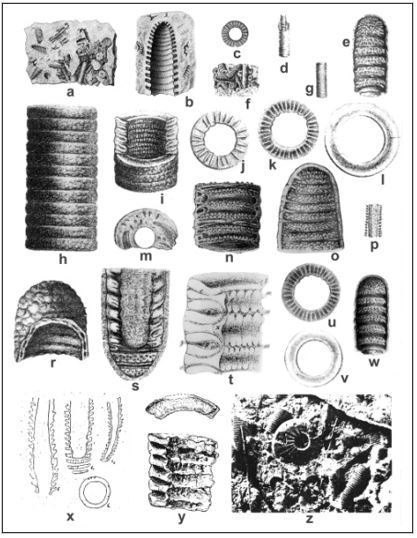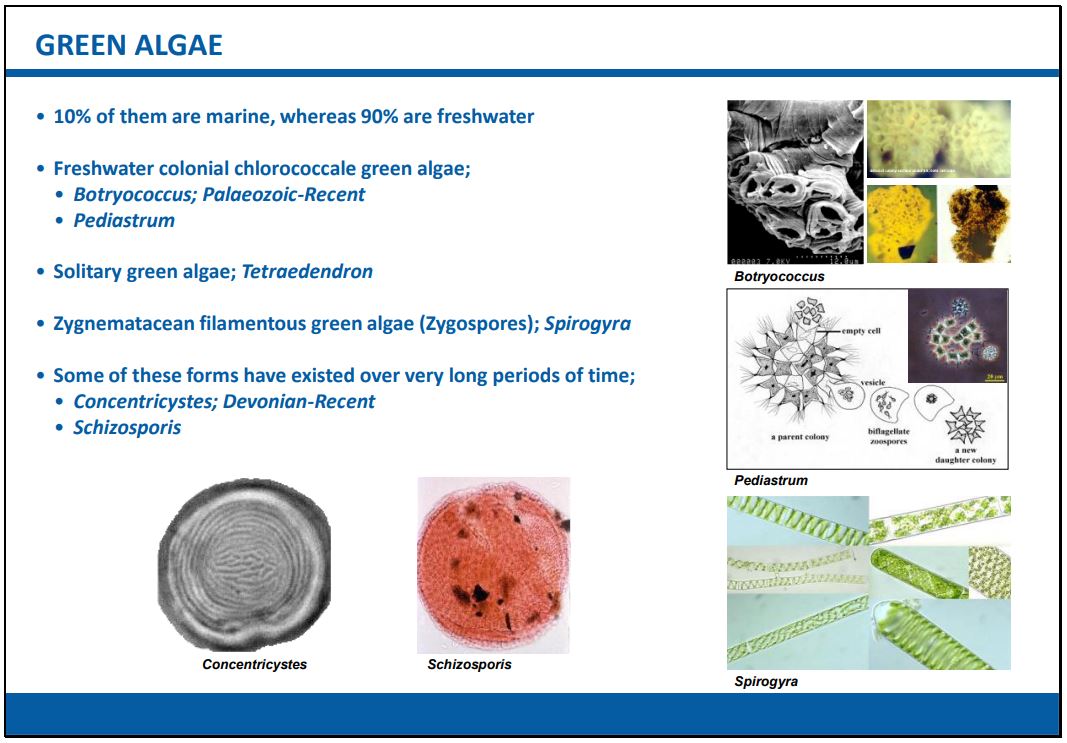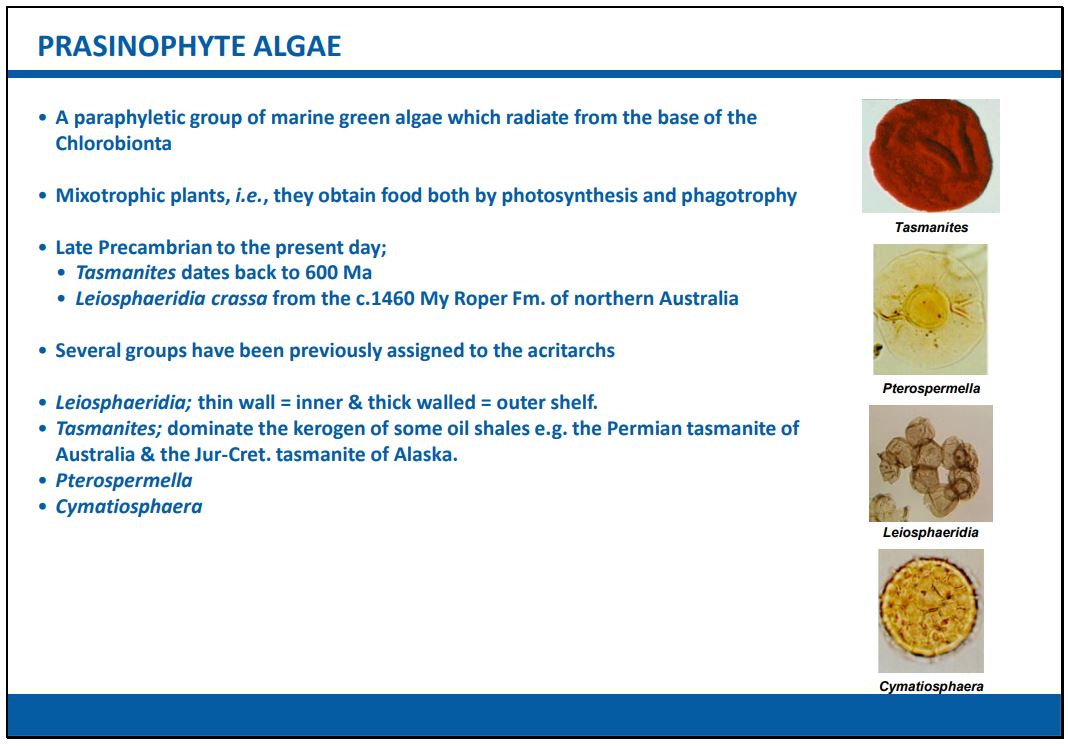Table of Contents
Calcareous Algae
The calcareous algae is an artificial group containing any form of algae which secretes calcium carbonate (in addition to the calcareous nannoplankton described below) and thus can potentially leave a fossil representation of itself. These fossils are most often seen in thin-section preparations of limestones and other well-indurated sediments, used to examine (typically) foraminifera. The group contains green, red and brown algae and also some cyanobacteria. Calcareous algae are, and have been, an important component in reef building and have probably existed since at least Ordovician times. In some shallow marine carbonate sections calcareous algae have good biostratigraphic value.

Although other factors can be as important, light is a fundamental requirement of these organisms and calcareous algae inhabit the photic zone in typically warm, clear waters. Varieties of algae with different pigments and metabolic processes enable forms to utilise specific intensities and wavelengths of water-penetrating light. Green algae such as Dasyclad Algae grow in very shallow waters, perhaps only down to 2-3 metres of water depth. Other green algal forms however may be able to live at deeper water depths.

Reconstruction of some Dasyclad algae from the Triassic.
Organic-Walled Algae
These algae are typically found in palynological preparations. They leave a fossil record because of their organic-walled nature and can therefore be observed alongside other palynomorphs such as dinoflagellate cysts, acritarchs, spores, pollen, chitonozoa etc.

